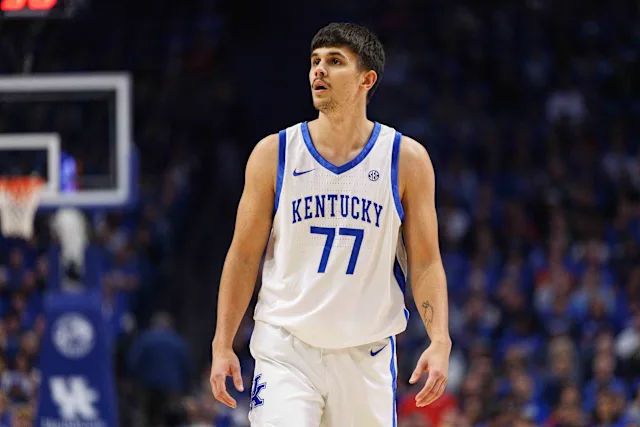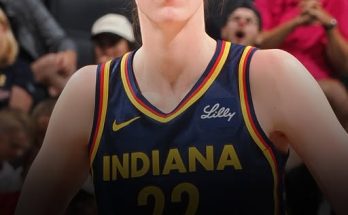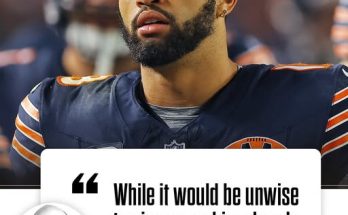Kerr Kriisa becomes the first basketball player from the UK to make a move. He is listed in the transfer portal
Mark Pope’s arrival as the head coach of the Kentucky Wildcats marks a significant shift in the program’s approach to roster management. With the NCAA landscape evolving due to NIL (Name, Image, and Likeness) opportunities and the transfer portal, Pope is tasked with navigating these new dynamics to maintain Kentucky’s competitive edge. His strategy blends leveraging NIL for recruitment and retention with a data-driven approach to identifying talent in the transfer portal. This article explores Pope’s methodology, the impact of NIL on Kentucky basketball, key transfer acquisitions, and the challenges and opportunities these tools present.
NIL as a Game-Changer
The introduction of NIL regulations has transformed college basketball recruiting. Players can now monetize their personal brand, making financial considerations a major factor in their college decisions. Kentucky, long known for its blue-blood status in college basketball, has embraced NIL as a fundamental aspect of its recruiting strategy under Pope’s leadership.
Kentucky’s NIL Structure
To compete with other elite programs, Kentucky has structured an extensive NIL program. The school’s NIL collective, Club Blue, plays a crucial role in securing funding for athletes. Following Pope’s hiring, Club Blue raised $650,000 in annual commitments from fans within three weeks. Additionally, two major donors contributed a combined $4 million, providing Pope with significant financial resources to work with.
The Wildcats are reportedly working with an NIL budget between $8 million and $10 million for the 2025-26 season. This level of investment positions Kentucky among the top NIL-funded programs in the nation, enabling Pope to attract and retain top-tier talent.
NIL’s Role in Recruiting
For elite recruits, NIL is often the deciding factor when choosing a school. Pope has actively used NIL opportunities to lure high-profile players to Kentucky. By ensuring competitive compensation and brand-building opportunities, Kentucky remains an attractive destination for the nation’s best prospects. Pope’s approach is holistic—rather than merely offering financial incentives, he emphasizes long-term brand growth and professional development, appealing to players with NBA aspirations.
The Transfer Portal: A New Recruiting Landscape
The transfer portal has revolutionized college basketball, allowing teams to rebuild quickly by acquiring experienced players rather than relying solely on freshmen. Pope, who previously utilized the portal effectively at BYU, has applied a similar strategy at Kentucky.
Key Transfer Acquisitions
Pope has already made significant moves in the transfer portal, bringing in players who fit his system and Kentucky’s competitive culture.
- Silas Demary Jr. (Georgia): The 6’5” guard averaged 13.5 points per game last season. Pope personally met with Demary Jr. and his family, showcasing his hands-on approach to recruiting.
- Ansley Almonor (Fairleigh Dickinson): Identified through a data-driven scouting process, Almonor was initially ranked 345th in the transfer portal but has proven to be a key contributor.
- Kam Williams (Tulane): An experienced guard who adds depth to Kentucky’s roster.
- Kerr Kriisa (West Virginia): Although Kriisa suffered a season-ending injury, his recruitment underscores Pope’s willingness to bet on proven talent.
These acquisitions highlight Pope’s strategy of targeting players who can make an immediate impact rather than relying exclusively on unproven freshmen.
Data-Driven Recruitment
Unlike traditional recruiting, which often prioritizes high school rankings, Pope has adopted a “Moneyball” approach, using advanced analytics to evaluate transfer portal prospects. By focusing on efficiency metrics, shooting percentages, and defensive ratings, he identifies undervalued players who can thrive in his system.
Almonor is a prime example—despite being overlooked by major programs, his statistical profile indicated he could be a high-impact player. Pope’s willingness to challenge conventional recruiting norms has already paid dividends.
Challenges and Opportunities
While NIL and the transfer portal provide Kentucky with significant advantages, they also present challenges. Managing a roster with high turnover requires adaptability, and balancing NIL expectations with team chemistry can be complex.
Roster Turnover and Team Chemistry
One downside of heavy reliance on the transfer portal is roster instability. With players transferring more frequently, building long-term team chemistry becomes difficult. Pope must strike a balance between integrating new talent and fostering a cohesive team culture.
NIL: A Double-Edged Sword
While NIL offers financial incentives, it can also create disparities within the team. Managing player expectations and preventing potential conflicts over earnings is essential for maintaining harmony in the locker room. Pope’s transparent approach and emphasis on collective success will be crucial in navigating these challenges.
The Future of Kentucky Basketball
Pope’s early moves indicate a forward-thinking approach to roster management. By fully embracing NIL and the transfer portal, he is positioning Kentucky to remain competitive in an ever-evolving college basketball landscape. His ability to blend traditional coaching principles with modern recruiting strategies will determine Kentucky’s success under his leadership.
Mark Pope’s tenure at Kentucky represents a new era for the Wildcats. With a strong NIL infrastructure and an aggressive transfer portal strategy, he is reshaping the program to thrive in the modern era of college basketball. While challenges exist, Pope’s innovative mindset and adaptability provide a blueprint for sustained success. As the 2025-26 season approaches, all eyes will be on Kentucky to see how these strategies translate to on-court performance.



